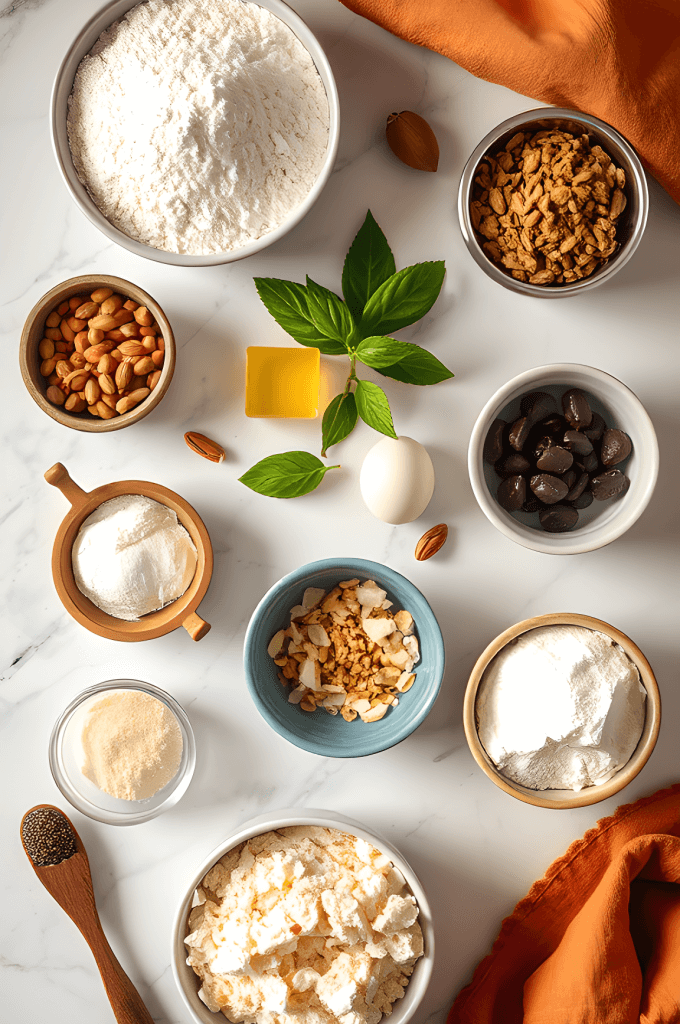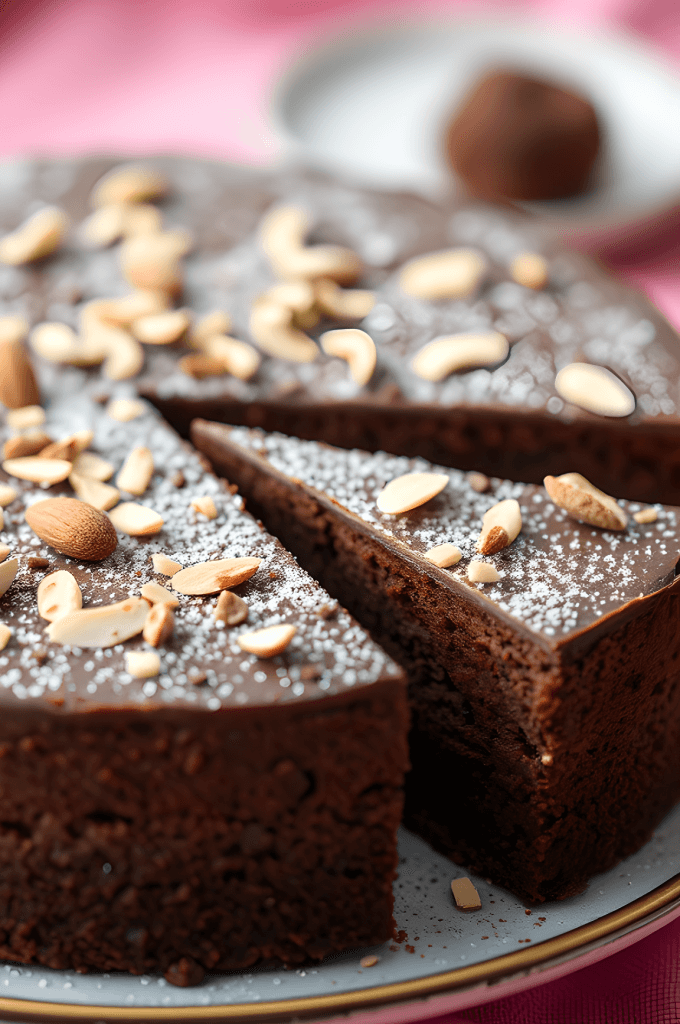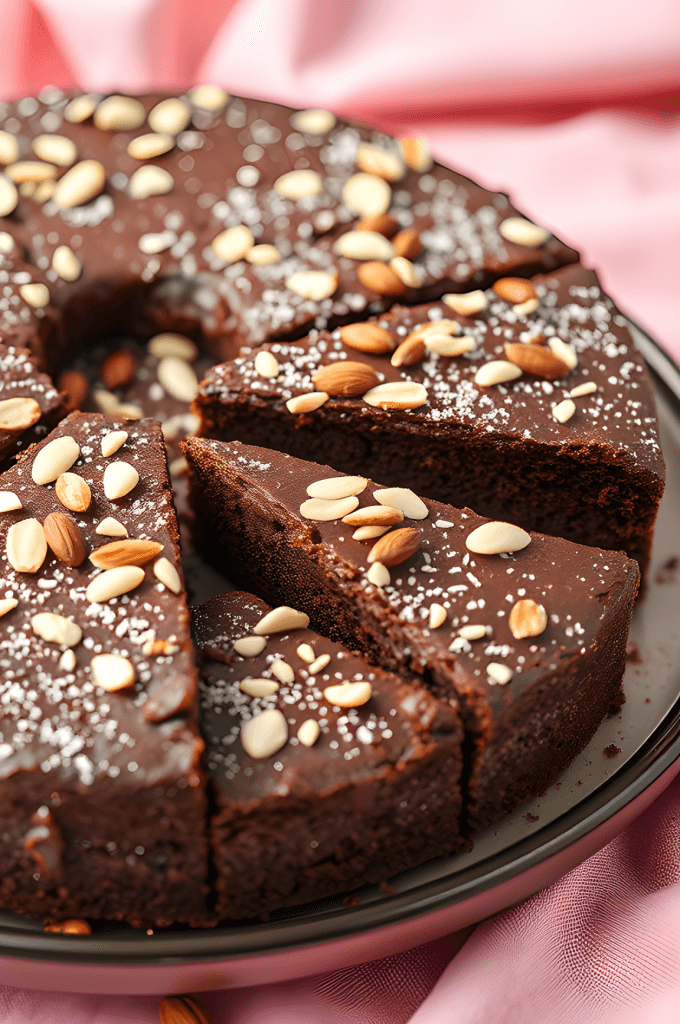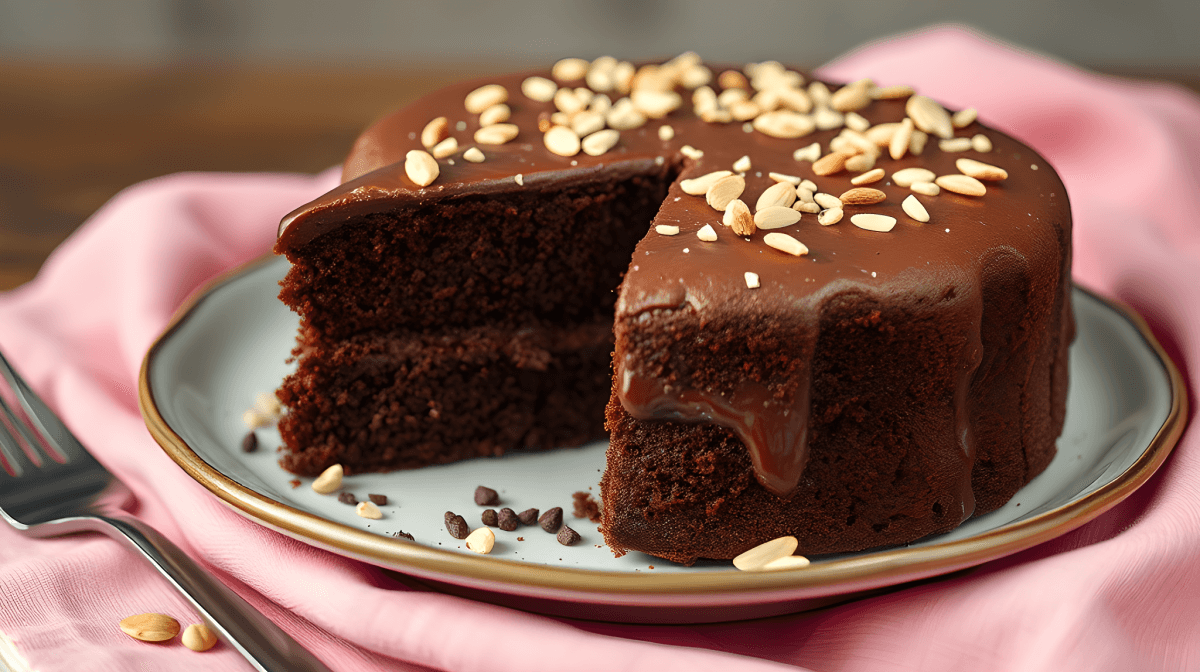Introduction: Best Gluten Free Desserts
Baking has always been a love of mine, especially when I get to recreate the recipes my grandmother passed down to me. Growing up in an Italian family, sweets were always present at the table. But after I discovered that I needed to cut out gluten from my diet, I quickly learned that it didn’t mean saying goodbye to desserts. In fact, I found that gluten-free baking can be even more rewarding because it challenges you to get creative with flavors, textures, and ingredients.
One of my favorite gluten-free desserts is the Almond Flour Chocolate Cake. I was introduced to almond flour by my grandmother when we started experimenting with gluten-free recipes, and since then, it’s become one of my go-to ingredients for making moist, rich cakes. Almond flour adds a delicate sweetness and depth of flavor that you just can’t get from traditional wheat flour. It’s an absolute game-changer when it comes to gluten-free baking.
This cake is not only easy to make but also incredibly versatile. The deep chocolate flavor pairs wonderfully with the nutty richness of almond flour, creating a dessert that’s not just for gluten-free eaters but for anyone who loves a decadent, satisfying treat.
The Magic of Almond Flour in Baking
Before diving into the recipe, it’s worth mentioning why almond flour works so well in gluten-free baking. Unlike other gluten-free flours like rice or tapioca flour, almond flour is made from ground almonds, which gives it a finer texture and a natural sweetness. This flour is also packed with healthy fats, protein, and fiber, making it a great choice for those looking to enjoy a more nutritious dessert without sacrificing flavor.
Almond flour also tends to yield more moist and tender baked goods than traditional wheat flour. This cake, in particular, stays soft and rich for days, making it a perfect dessert to make ahead for gatherings or special occasions. Whether it’s a birthday, holiday, or just a family gathering, this cake will surely impress your guests!
Recipe Breakdown
Let’s take a closer look at the ingredients for this Almond Flour Chocolate Cake and why each one is important:
Ingredients:
- 2 cups almond flour: The base of the cake, providing moisture and structure without any gluten. Almond flour also adds a subtle sweetness.
- 1/2 cup cocoa powder: Unsweetened cocoa powder gives the cake its rich chocolate flavor. It’s important to use unsweetened cocoa to keep the sugar levels in check.
- 1/2 teaspoon baking soda: This helps the cake rise and gives it a light texture. Baking soda reacts with the acid in the cocoa powder, creating bubbles that make the cake fluffy.
- 1/4 teaspoon salt: A pinch of salt enhances the chocolate flavor and balances out the sweetness.
- 1/2 cup coconut sugar: Coconut sugar is a lower glycemic sweetener, making it a great option for those looking to reduce their sugar intake. It adds a warm, caramel-like sweetness.
- 1/2 cup almond milk: This non-dairy milk keeps the cake moist without adding any dairy. Almond milk also adds a mild nutty flavor that complements the almond flour.
- 1/4 cup melted coconut oil: Coconut oil is a healthy fat that gives the cake richness and helps it stay moist.
- 3 large eggs: Eggs provide structure and bind the ingredients together, giving the cake its texture.
- 1 teaspoon vanilla extract: Vanilla enhances the flavor profile and complements the chocolate notes in the cake.
- 1/2 cup dark chocolate chips (optional): These optional chocolate chips will melt into the cake, creating pockets of gooey chocolate.
For the Frosting:
- 1/2 cup dark chocolate: This is the base for the rich, creamy frosting. Dark chocolate adds a deep, intense flavor that pairs wonderfully with the almond flour cake.
- 2 tablespoons coconut oil: Coconut oil helps the frosting set and adds a silky smooth texture.
- 2 tablespoons almond milk: Almond milk keeps the frosting smooth and dairy-free.
- 1 tablespoon maple syrup (optional): If you prefer a sweeter frosting, maple syrup adds a touch of sweetness while keeping the recipe natural and gluten-free.

Instructions:
Let’s go step by step through the process of making this delicious dessert:
Step 1: Preheat and Prep
Preheat your oven to 350°F (175°C). This ensures that your cake starts baking as soon as it’s in the oven, which is important for an even rise. Line an 8-inch round cake pan with parchment paper or grease it with coconut oil. This prevents the cake from sticking to the pan and makes for an easy removal once it’s baked.
Step 2: Dry Ingredients
In a medium bowl, whisk together the almond flour, cocoa powder, baking soda, and salt. Whisking the dry ingredients together first helps ensure everything is evenly distributed, which will result in a more consistent texture in your cake.

Step 3: Wet Ingredients
In a separate bowl, whisk together the coconut sugar, almond milk, melted coconut oil, eggs, and vanilla extract. The eggs and almond milk will help the dry ingredients come together to form a smooth batter. If you’re using coconut oil, be sure it’s melted but not too hot, as hot oil can cook the eggs and affect the texture of the cake.
Step 4: Combine
Slowly add the dry ingredients into the wet ingredients. Stir gently, making sure everything is well combined. Almond flour batters can be a bit thick, so use a spatula or wooden spoon to mix it. Avoid overmixing to prevent the cake from becoming dense. The batter should be thick and smooth.
Step 5: Pour and Bake
Pour the batter into the prepared cake pan and smooth the top with a spatula. Bake the cake for 25-30 minutes. Start checking at around 25 minutes by inserting a toothpick into the center. If it comes out clean, the cake is done. Keep an eye on it towards the end, as oven temperatures can vary. Once the cake is baked, let it cool in the pan for about 10 minutes before turning it out onto a wire rack to cool completely.
Step 6: Cool
Let the cake cool completely before frosting. Frosting a warm cake can cause the frosting to melt, so it’s best to give it time to cool to room temperature.
Step 7: Make the Frosting
While the cake is cooling, prepare the frosting. Melt the dark chocolate in a heatproof bowl over a pot of simmering water (double boiler method) or in the microwave. Once melted, stir in the coconut oil and almond milk until smooth. For extra sweetness, add a tablespoon of maple syrup, but feel free to skip it if you prefer a less sweet frosting. The consistency should be silky and spreadable.
Step 8: Frost and Serve
Once the cake has completely cooled, spread the frosting evenly over the top. If you want a more polished look, you can frost the sides of the cake as well. For a decorative touch, sprinkle chocolate chips, chopped almonds, or a pinch of sea salt on top of the frosting.
Why This is the Best Gluten-Free Dessert
One of the greatest things about this cake is how it caters to so many dietary restrictions without compromising on flavor. Almond flour is naturally gluten-free, dairy-free, and packed with nutrients, making it an ideal choice for anyone looking to enjoy a dessert that fits within their dietary needs.
This Almond Flour Chocolate Cake is also a fantastic option for people with nut allergies. The almond flour can easily be substituted with oat flour, coconut flour, or a gluten-free flour blend if you prefer. However, almond flour does provide a unique flavor and texture that’s hard to replicate.
Additionally, it’s a dessert that’s made with unrefined sweeteners, so it’s a little less guilty than traditional chocolate cakes. Coconut sugar, which is used in this recipe, is a natural sweetener that doesn’t spike blood sugar as much as refined sugars. It also brings a warm, rich flavor that complements the chocolate perfectly.
Tips & Variations:
- Make it Sugar-Free:
If you’re looking to make this cake sugar-free, you can substitute the coconut sugar with stevia, monk fruit, or any other sugar alternative. Keep in mind that you may need to adjust the amount of sweetener based on the brand you choose. Some are much sweeter than coconut sugar, so start with a smaller amount and taste as you go. - Flour Substitutes:
If you don’t have almond flour, you can use a gluten-free flour blend. However, almond flour has a unique ability to keep baked goods moist, so you might need to adjust the baking time and consistency of the batter when substituting with other gluten-free flours. - Add Fruit:
Fresh fruit such as raspberries, strawberries, or even bananas can be folded into the batter for an extra burst of flavor. I love the contrast of tangy fruit with the richness of the chocolate, especially with raspberries. - Dairy-Free Options:
This cake is already dairy-free, but be sure to use dairy-free chocolate for the frosting and opt for almond milk or coconut milk as your base. If you’re not concerned about dairy, feel free to use regular milk and butter for a more indulgent treat.

Conclusion:
This Almond Flour Chocolate Cake is everything you want in a dessert: rich, moist, and utterly satisfying. It’s the perfect way to enjoy a gluten-free treat without feeling like you’re missing out. Whether you’re gluten-intolerant, have dietary restrictions, or simply love a good chocolate cake, this recipe will not disappoint.
Have you tried making this cake? Let me know how it turned out! And if you’ve added your own twist to the recipe, I’d love to hear about it. Don’t forget to share your version of this cake with friends and family – because everyone deserves a slice of this delicious gluten-free dessert!

